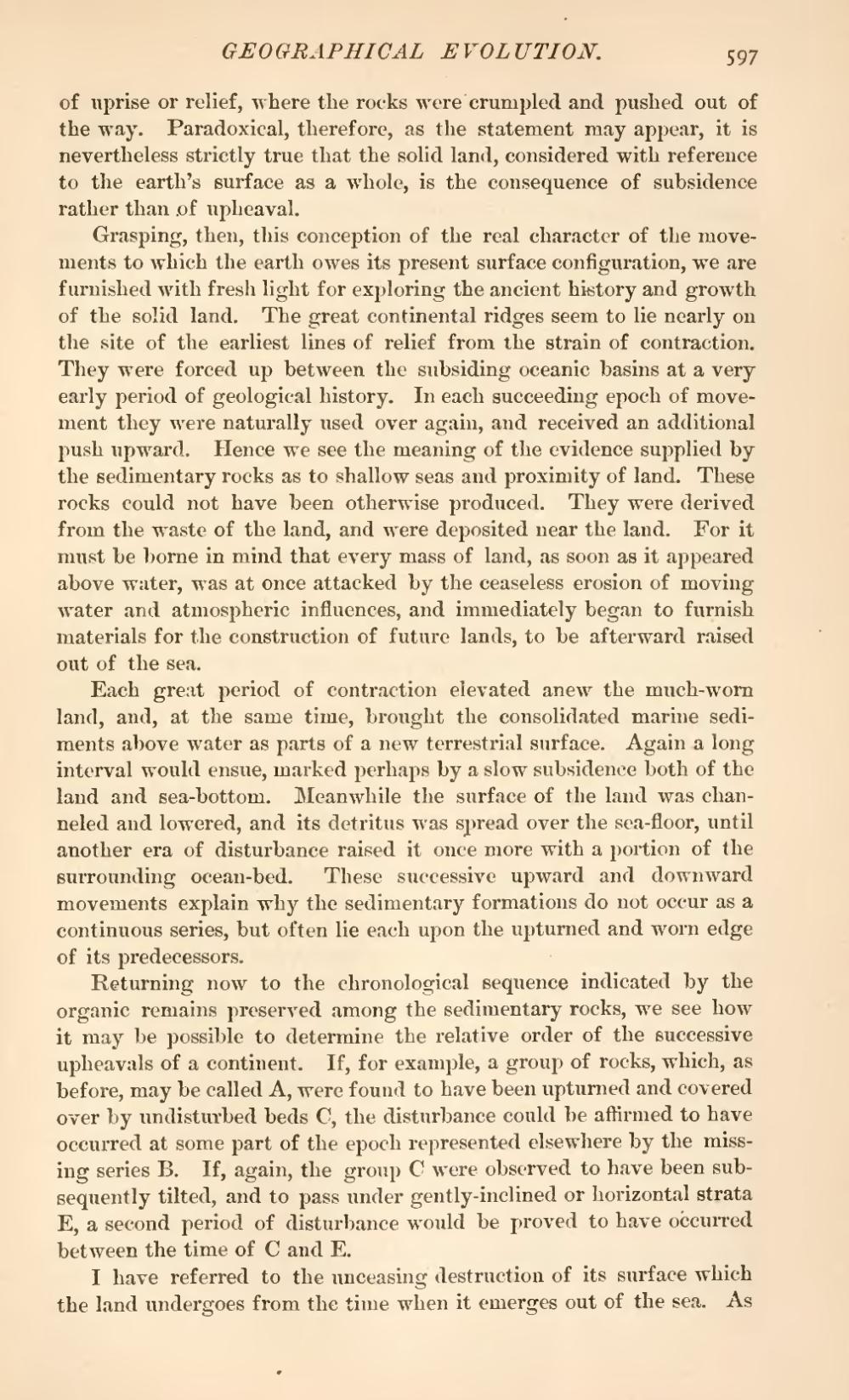of uprise or relief, where the rocks were crumpled and pushed out of the way. Paradoxical, therefore, as the statement may appear, it is nevertheless strictly true that the solid land, considered with reference to the earth's surface as a whole, is the consequence of subsidence rather than of upheaval.
Grasping, then, this conception of the real character of the movements to which the earth owes its present surface configuration, we are furnished with fresh light for exploring the ancient history and growth of the solid land. The great continental ridges seem to lie nearly on the site of the earliest lines of relief from the strain of contraction. They were forced up between the subsiding oceanic basins at a very early period of geological history. In each succeeding epoch of movement they were naturally used over again, and received an additional push upward. Hence we see the meaning of the evidence supplied by the sedimentary rocks as to shallow seas and proximity of land. These rocks could not have been otherwise produced. They were derived from the waste of the land, and were deposited near the land. For it must be borne in mind that every mass of land, as soon as it appeared above water, was at once attacked by the ceaseless erosion of moving water and atmospheric influences, and immediately began to furnish materials for the construction of future lands, to be afterward raised out of the sea.
Each great period of contraction elevated anew the much-worn land, and, at the same time, brought the consolidated marine sediments above water as parts of a new terrestrial surface. Again a long interval would ensue, marked perhaps by a slow subsidence both of the land and sea-bottom. Meanwhile the surface of the land was channeled and lowered, and its detritus was spread over the sea-floor, until another era of disturbance raised it once more with a portion of the surrounding ocean-bed. These successive upward and downward movements explain why the sedimentary formations do not occur as a continuous series, but often lie each upon the upturned and worn edge of its predecessors.
Returning now to the chronological sequence indicated by the organic remains preserved among the sedimentary rocks, we see how it may be possible to determine the relative order of the successive upheavals of a continent. If, for example, a group of rocks, which, as before, may be called A, were found to have been upturned and covered over by undisturbed beds C, the disturbance could be affirmed to have occurred at some part of the epoch represented elsewhere by the missing series B. If, again, the group C were observed to have been subsequently tilted, and to pass under gently-inclined or horizontal strata E, a second period of disturbance would be proved to have occurred between the time of C and E.
I have referred to the unceasing destruction of its surface which the land undergoes from the time when it emerges out of the sea. As
